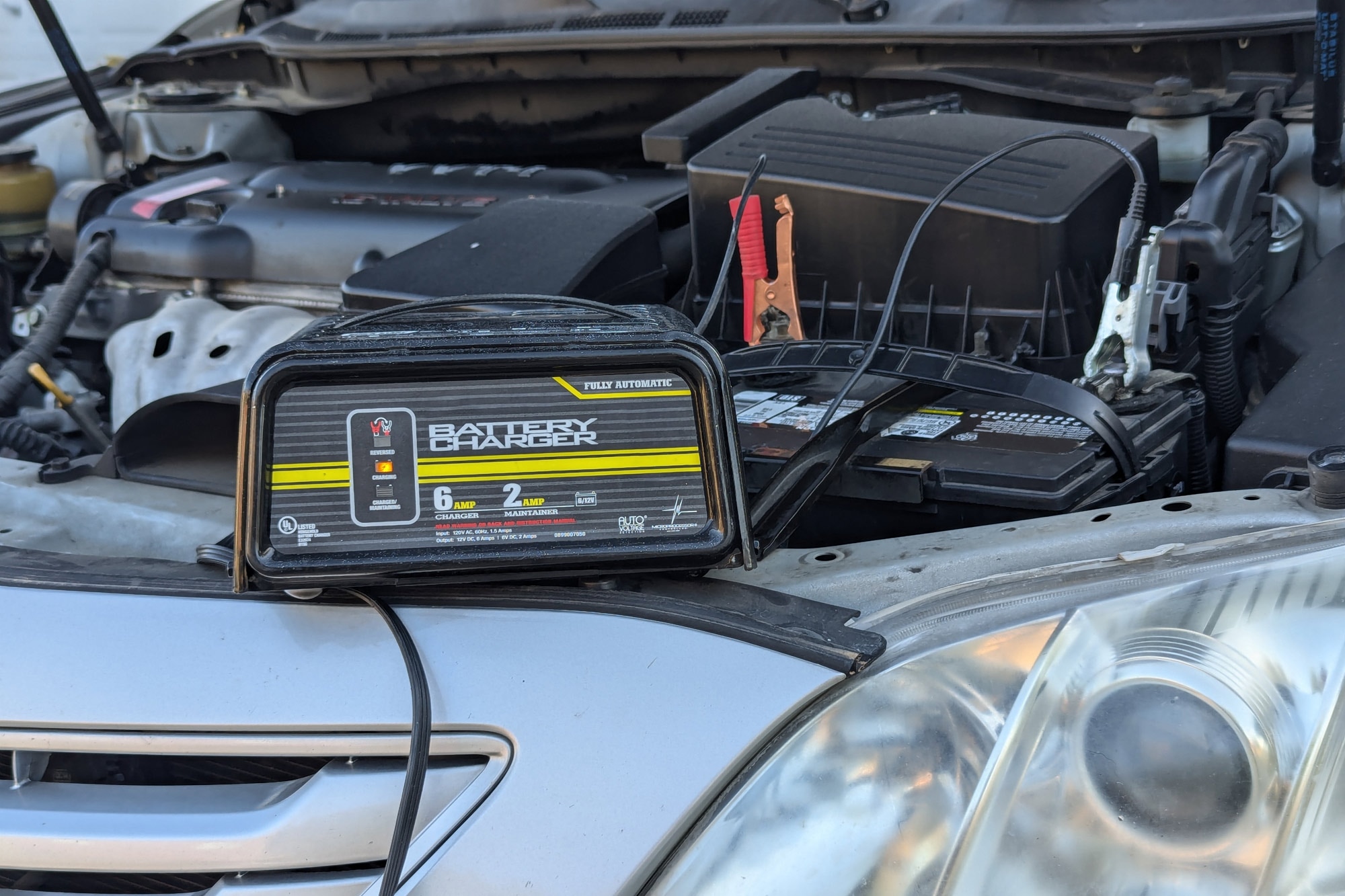How to Charge A Car Battery
Charging a car battery can be simple — as long as you have the right equipment.
 Austin Lott | Capital One
Austin Lott | Capital One
Perhaps you left the lights on overnight and now your car's battery is dead. Now is an ideal time to invest in a 12-volt battery charger and put it to good use.
How to Access Your Car Battery
On many automobiles, the 12-volt battery is located somewhere under the hood, which makes access for charging a drained battery an easier job, especially if you want to remove it and recharge it on a workbench.
Audi, Mercedes-Benz, Chevrolet, and some other manufacturers may have models with the battery in the trunk for safety and weight-distribution reasons. In that case, a dead battery could make it a challenge to access the locked rear trunk, as those trunk latches often need electricity to operate. You might need to find a manual trunk release to access the battery. They're sometimes located behind the rear armrests or near headrests.
Even if your car battery is under the hood, the complexity of modern engine bays and power systems sometimes means removing the battery entirely for an out-of-car recharge, which can be a complicated job.
If you still can't find the battery, try checking your owner's manual to see if your vehicle has a specific recommended procedure for car-battery charging.
Prepping the Car Battery for a Charge
It's important to wear eye protection and gloves before handling a battery.
Before you begin charging a battery, it's a good idea to try to determine when it was manufactured — especially if you're dealing with a used vehicle. The date should be printed on a sticker on the side or top. If the car battery is five years or older, it should be replaced instead, as batteries degrade over time.
Your car battery uses a self-contained chemical reaction to produce power, and one of the side effects can be corrosion of the connecting terminals and cables. In order to get the best out of a recharging job, it's a good idea to clean the battery terminals first. This can be done with a baking soda solution and a wire brush. Wear protective gear and use the solution sparingly, brushing until the metal is free of corrosion.
Connecting the Car Battery Charger
Using a charger means following the proper procedures. Read the instructions to your charger carefully before trying to resurrect your dead battery.
The first step is to make sure that the car-battery charger is plugged into an external source but not turned on before you make any connections. Identify the positive post (usually red) on the battery and attach the positive cable from the charger, then connect the negative post (usually black) with the negative cable.
You can then turn on the charger. Based on the readouts you see on its digital or analog displays, you'll know when the battery has an appropriate charge. In many cases, this might be several hours or even overnight. For safety, ensure the charger is completely disconnected before starting up the vehicle.
While most consumer-level battery chargers will shut off after a charge is complete, it's a good practice to promptly turn off the charger when the battery is full. Remove the ground first and then the positive cable.
If your vehicle frequently sits for long periods of time, it might be worthwhile to invest in a battery maintainer, which monitors the status of the battery and keeps it at a consistent level of charge.
Written by humans.
Edited by humans.
 Andy Stonehouse
Andy StonehouseAndy Stonehouse literally fell into the world of auto writing while working as a ski-town journalist, and has not looked back since. A childhood spent dealing with the eccentricities of a 1976 MG Midget has made any subsequent auto experience a more safe and reliable drive. He has been blessed with nearby mountain trails and snowy roads in Colorado to do TV-adventure-styled test drives on a weekly basis.
Related articles
View more related articles